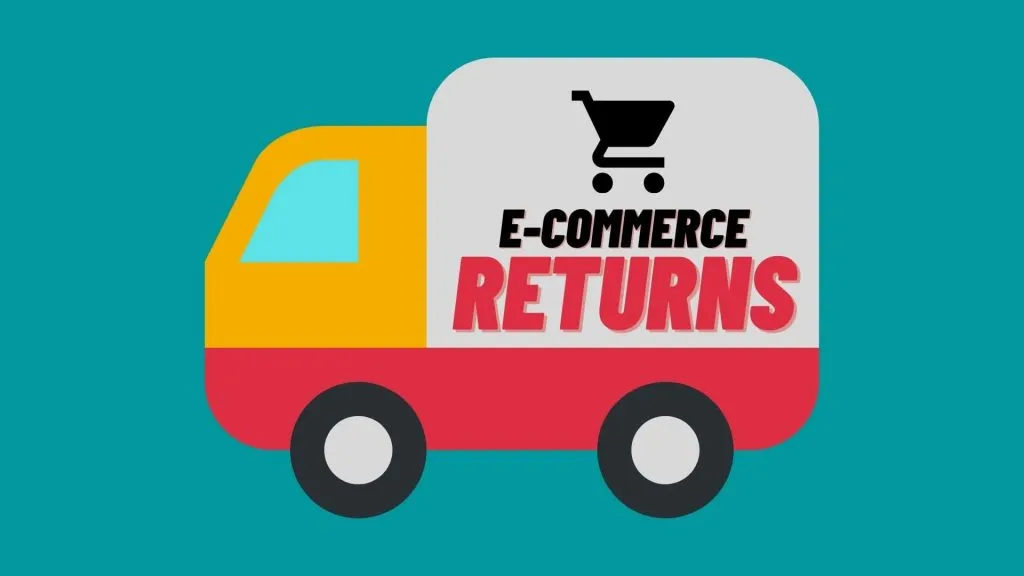Trends to Simplify E-commerce Selling Part 4: Returns in E-commerce: The Necessary Evil
Blog: NASSCOM Official Blog

You can’t be relaxed after the order gets delivered to the customer doorstep. Every year hundreds of billions of dollars are lost in e-commerce returns, and that’s why a best-in-class return policy is required for e-commerce business. In an e-commerce business, returns are like a disease which can affect the profit margins as well as conversion rates and can ultimately affect your business.
As per the latest report of Statista, by 2020, the return deliveries will cost nearly $550 billion. This number doesn’t even include the restocking expense or inventory losses. It is difficult to find out the exact number for returns. As per a report, the return rates in e-commerce industry is nearly 20%, for expensive products it is 50%, for holiday e-commerce it is 30% while in brick-and-mortar stores it is just 10%. In this article, we are going to discuss all the aspects of the returns in e-commerce including the common reasons for returns, how to manage returns, and much more.
Reasons for Returns in E-commerce:
Before beginning, how you can set up an effective return policy, you need to know what the main reasons are for the returns or refunds. These are:
- Festive Season: Time of Maximum Return
- Product is not convincing as expected
- Wrong product description on the site
- Size didn’t fit for the buyer
- Making a subtle purchase via Wardrobing
- Changing the opinions of buyers
We will discuss each of these reasons in more detail.
1. Festive Season: Time of Maximum Return
Every e-commerce retailer for the festive season such as Black Friday, Christmas, or Diwali but with the sales the returns or refunds are also on an all-time high. Many people buy a lot of gifts for their kith and kin but not every gift is appreciated by them or doesn’t fit their needs. The best option for them at that time is to either return the product or replace it with another product. In 2019, in the month of November & December, products worth $41.6 billion were returned by the customers, making it one of the most painful moments.
They can’t even opt for cutting down their return policy as it will negatively affect them more in the long run. In fact, many retailers provide a free return to woo customers for more sales. However, the practice of buying gifts with the intention of returning is turning a new normal for the shoppers.
2. Product is not convincing as expected:
This is amongst the most common reasons for returns in e-commerce. Not all customers get satiate by the product they have ordered. Purchasing is just a deal, and the customers’ aren’t interested in deals which don’t meet their expectations.
When someone orders a pair of shoes, there are multiple expectations set by the customers such as the shoes would meet his looks, will provide comfort in the sole, would be jumpy etc. But when any of these expectations get failed then the customer prefers to return the pair of shoes.
3. Wrong description on the site:
There is a different practice in online shopping in comparison to brick-and-mortar stores. The customers can’t touch or feel the products but instead, rely on the information that you have provided in the product description. The customers check the product description, images, videos, visuals, reviews & ratings, etc. In many scenarios, even the high-resolution images are not as per the actual product, then the customer will prefer to return. It is a common thing in e-commerce that the products are very attractive when seen online but are dull in actuality. Buyers are completely innocent in such cases and their refund or exchange request are completely justified.
4. Size didn’t fit for the buyer:
Product size is a critical factor for the e-commerce business dealing with the clothing or footwear industry. The wrong size of footwear or clothing is of no use for the customers, and hence returning or replacement is the only choice for them. If the e-commerce store doesn’t return or replace then their money will get wasted and probably never shop again. In many cases, the wrong merchandise gets packed and delivered to the customers, which is another issue.
5. Making a subtle purchase via wardrobing:
A person in California ordered a dark back dress from a popular clothing company. It was all good & sober but still, the customer returns the product with a sweet reason “The shirt doesn’t fit me”. But when the merchant checked the customer, it seems used and even washed.
This is one of the most irritating things for merchants where they find themselves helpless. Every day thousands of such fraudulent activities happen in the e-commerce business. It is a complete fraud by the customer of purchasing, using and returning that item. These returns and refunds reasons are not genuine. But what the merchants can do for this? They can check the customer behavior, purchase history, reasons in the returns request form, and then analyze this pattern to accept or neglect the return request.
6. Changing the opinions of the customers:
The customers’ opinions are also fluctuating even at the last moment. They can decide anytime to return the product and save money. There can be infinite reasons for this.
Stats of Returns in E-commerce Business:

Do you know that by 2020, the deliveries of only return in online business will cost nearly $550 billion? While the return rate in the brick-and-mortar store is just 8% in online business the figure is nearly 25%. Some of the most frequently returned online product categories are clothing & shoes (56%), accessories & jewelry (30%), electronics (42%), health & beauty (22%), and entertainment (21%).
Also, nearly 47% of the customers will not buy an item if they have to pay for free shipping, now this makes return policy essential for the e-commerce merchants. Merchants, on the other hand, raise prices of the products to meet return expenses. 40% of the customers’ purchase items with the intention of returning them. Here are some of the choices for the customers regarding returns:
- Free Online Returns: 82%
- Return Policy is insignificant: 10%
- Refund options other than store/site credit: 61%
- Ability to return products bought online at a physical store: 69%
- Longer return window: 54%
How do returns affect the retailers?
- 57%: Dealing with returns has a negative impact on the daily running of the business
- 33%: Offer free returns but offset the cost of this by charging for delivery
- 20%: Increases the price of products to cover the cost of returns
Even the customer behavior is also different as per the return policy. 68% of customers review the return policy before making a purchase. 67% are satisfied with a clear and easy-to-understand return policy.
How to reduce E-commerce returns? Effective Strategies:

If you choose to completely eliminate the return policy from your e-commerce store then it can be a footfall for your online business. Returns are the part of retail business whether online or physical stores. But there are different strategies that you can use to reduce the return rates. Here are some important ones:
1. Streamline the return process:
Logistics play an important role in both the orders fulfilment and return process. The logistics provider must have an effective plan for the reverse shipping process. Check out the process which you are currently using for returns from the customer point of view. Audit this process and treat every loophole or potential improvement as an opportunity to improve the process. Here are some considerations that you must take into account:
- Is it easy for the customer to make contact
- How you can track the returns?
- How are returns handled on arrival and returned to the warehouse?
- Check the accounts of returns (reconciling, inventory, sale, and taxes)
2. Return Process Automation:
Today’s the big e-commerce players such as Amazon, Flipkart, eBay are automating the return process to make it more effective. If you have just entered the online e-commerce business then you may designate a person or two for handling returns. However, as your business will grow over a period of time then you have to necessarily automate the return processes. However, automation is not a cakewalk in online business.
Even with so many advanced technologies, it is not easy to connect the warehouse management system, order fulfilment system with your e-commerce store. That can result in time-consuming manual work for requesting and entering information. It is also inefficient and highly prone to errors. You can even lose your data and records. Hence, it would be wise if you chose for automation in e-commerce returns management due to these reasons:
- Customers and easily initiate a return whether you had set up blind returns or needs authorization.
- Data moves automatically between systems eliminating any chances of errors
- Automatic reconciliation
- Returns are tracked automatically, and the status is also updated automatically
- Shorter return process with automatic return labels
- Require fewer resources for managing and monitoring the return process
3. Modify your Return Policy:
The simple act of return policy has the power to impact your sales or decide whether the customer will shop from your e-commerce store or not. As per the research of UPS, nearly 88% of the online customers check the return policy before buying a product online.
Unfortunately, 15% of the online customers will not purchase an item if the return policy is not clear or favourable. Try to provide a clear-cut and easy to understand return policy with easy language. Likewise, update the return policy to make it more customer-centric. Here are some important points that you can consider:
- Increasing the time frame in which returns are accepted
- Allowing free returns with some conditions if required.
- Simple language of the return policy so customers can easily understand it within a minute
4. Review the packaging of your product:
Packaging also plays an important while managing the returns in online business. There are many products which are fragile and can be damaged if the packaging is not proper. For e.g. electronic items or glassware are prone to get damaged. And customers have to return these items when they are found damaged. Here are some considerations that you must take into account:
- Nearly one-fifth of the customers return the product due to damage.
- Check whether the packaging is sufficient to protect the products for delivering (right size, thickness, stiffness, etc)
- Are the included packing materials to pad the products protecting the contents within?
- Is damage happening with a specific carrier?
5. Audit the Warehouse:
Even there is complete automation in the delivery process and it is well documented, you must regularly audit the warehouse team who are responsible for the outbound shipments and handling product returns. Check the bottlenecks which are increasing the cost of handling returns like mishandled or misplaced products coming back into stock, packaging delays, interruptive workflows, etc.
6. Improve the images of products:
As we mentioned above, product images are also responsible for increasing the returns. In many cases, the product seems very attracting while seen on screen but is quite dull in the real life. Hence, you must improve the product images. Here are some points to consider:
- Avoid using matching images or manufacturing images
- Take the real, professional, high-quality images
- Post multiple images of a product from different angles
- Include images of the customers who are using the product
7. Leverage product reviews:
Customers trust other customers more. Hence, a positive review by the customer for your product matters for other customers as well. When comparing customer purchase and return behaviors, PETCO found there were 20.4% fewer returns on products that contained product reviews.
8. Follow the customer feedback:
Customers always prefer to check if the return process is easy or convenient. In fact, 85% of customers will not come to buy again if there is a hassling return process. React out to every customer after the fulfilment of a return and get their feedback for the return process. If there is any obstacle in the return, the customers will probably tell you about that.
Wrapping Up:
Managing the returns on your e-commerce store can cost money or make money. Returns will always be higher in the online business than a brick-and-mortar store. However, using the above-mentioned strategies can help you in reducing the returns.
The post Trends to Simplify E-commerce Selling Part 4: Returns in E-commerce: The Necessary Evil appeared first on NASSCOM Community |The Official Community of Indian IT Industry.
